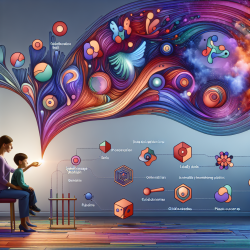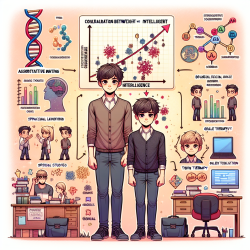Introduction
The world of speech-language pathology is continuously evolving, with new research offering fresh insights into how we can improve therapy outcomes for children. One such intriguing study is the "Experimental study of the nonreciprocal effective interactions between microparticles in an anisotropic plasma." While this research primarily focuses on plasma physics, its underlying principles of interaction and adaptation can be applied to speech-language therapy, particularly in developing strategies that are both data-driven and innovative.
Understanding the Research
The study explores how microparticles interact within a plasma sheath, focusing on the nonreciprocal forces at play. These interactions are influenced by various factors, including the plasma's anisotropy and the particles' thermal motion. The researchers developed a method to measure these interactions without external perturbations, providing a clear picture of how even minor changes in conditions can significantly affect outcomes.
Implications for Speech-Language Therapy
While plasma physics and speech-language therapy might seem worlds apart, the concept of nonreciprocal interactions can be metaphorically applied to therapy sessions. Here are some key takeaways for practitioners:
- Adaptability in Therapy: Just as microparticles adapt to changes in their environment, therapy sessions should be flexible to accommodate the unique needs of each child. This might involve adjusting techniques based on real-time feedback and observations.
- Data-Driven Decisions: The study emphasizes the importance of measuring interactions without external interference. Similarly, speech-language pathologists should rely on unbiased data collection methods to assess progress and adapt strategies accordingly.
- Individualized Interactions: The nonreciprocal nature of particle interactions suggests that each child’s response to therapy can vary. Tailoring interventions to individual responses can lead to more effective outcomes.
Encouraging Further Research
This study opens the door for further exploration into how principles from physics can enhance therapeutic practices. Speech-language pathologists are encouraged to delve into interdisciplinary research, exploring how concepts from seemingly unrelated fields can offer new perspectives and tools.
Conclusion
Incorporating insights from diverse fields can enrich the practice of speech-language pathology, leading to improved outcomes for children. By understanding and applying the principles of interaction and adaptability highlighted in this plasma study, practitioners can refine their approaches to therapy, ensuring they are both effective and responsive to each child's needs.
To read the original research paper, please follow this link: Experimental study of the nonreciprocal effective interactions between microparticles in an anisotropic plasma.










